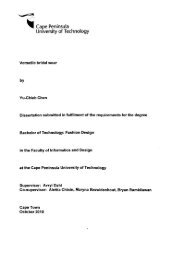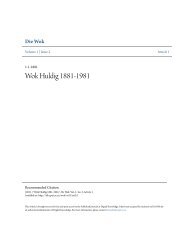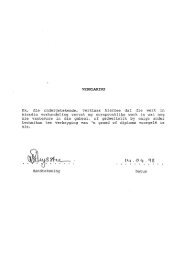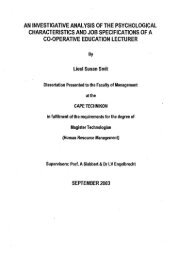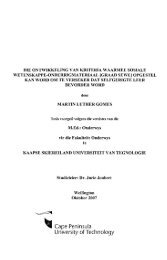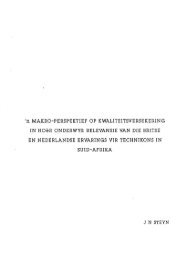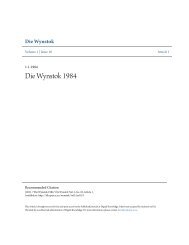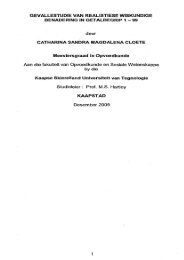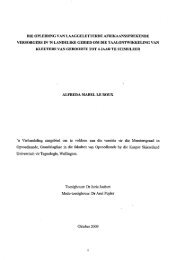E-commerce - Cape Peninsula University of Technology
E-commerce - Cape Peninsula University of Technology
E-commerce - Cape Peninsula University of Technology
You also want an ePaper? Increase the reach of your titles
YUMPU automatically turns print PDFs into web optimized ePapers that Google loves.
Chapter 2: Literature review Page 9<br />
begun to utilise the opportunities <strong>of</strong>fered by trading activities through the<br />
Internet (La & Kandarnpully, 2002).<br />
As different regions <strong>of</strong> the world take e-retailing in different ways and at<br />
different rates, it is interesting to contemplate how quickly the United States<br />
(US) population has adopted the Internet and it is easy to understand why.<br />
Historically, the US has been a country in which new technologies are<br />
assimilated fairly rapidly, given the relative lack <strong>of</strong> economic constraints and<br />
the manufacturing realities <strong>of</strong> the time (Burt & Sparks, 2003). Windham and<br />
Orton (2000) further explains that the US is the source <strong>of</strong> most Intemet<br />
technologies and it is not surprising that it should be in the lead in their<br />
application. The Internet reached as many Americans in the first six years as<br />
telephones did in four decades. Everyday, Intemet access is becoming<br />
available to a growing percentage <strong>of</strong> the US population (Windham & Orton,<br />
2000:3). These authors argue that <strong>of</strong> all the wealthier economies in the USA,<br />
Asia and Europe, more than half the combined population has Internet<br />
access and it is inevitable that more consumers will choose to make<br />
purchases through the Internet as access becomes more widespread.<br />
The increasing importance <strong>of</strong> &Commerce was apparent in a large study<br />
conducted by researchers at the Georgia Institute <strong>of</strong> <strong>Technology</strong> (Provost,<br />
2000). It was found that electronic <strong>commerce</strong> was taking <strong>of</strong>f both in terms <strong>of</strong><br />
the number <strong>of</strong> users shopping as well as the total amount people were<br />
spending via Internet based transactions. Provost (2000) also found that<br />
through the connectivity provided by the Internet, the range <strong>of</strong> goods and<br />
services <strong>of</strong>fered can be extended. It is feasible for retailers to sell millions <strong>of</strong><br />
products via their websites as the technology brings buyers and sellers<br />
together regardless <strong>of</strong> their geographical location. Clearly, electronic<br />
<strong>commerce</strong> brings new forms <strong>of</strong> market to e-customers and e-retailers, partly<br />
out <strong>of</strong> new ways to do business, but originally because <strong>of</strong> the technologies<br />
that are now in use.




